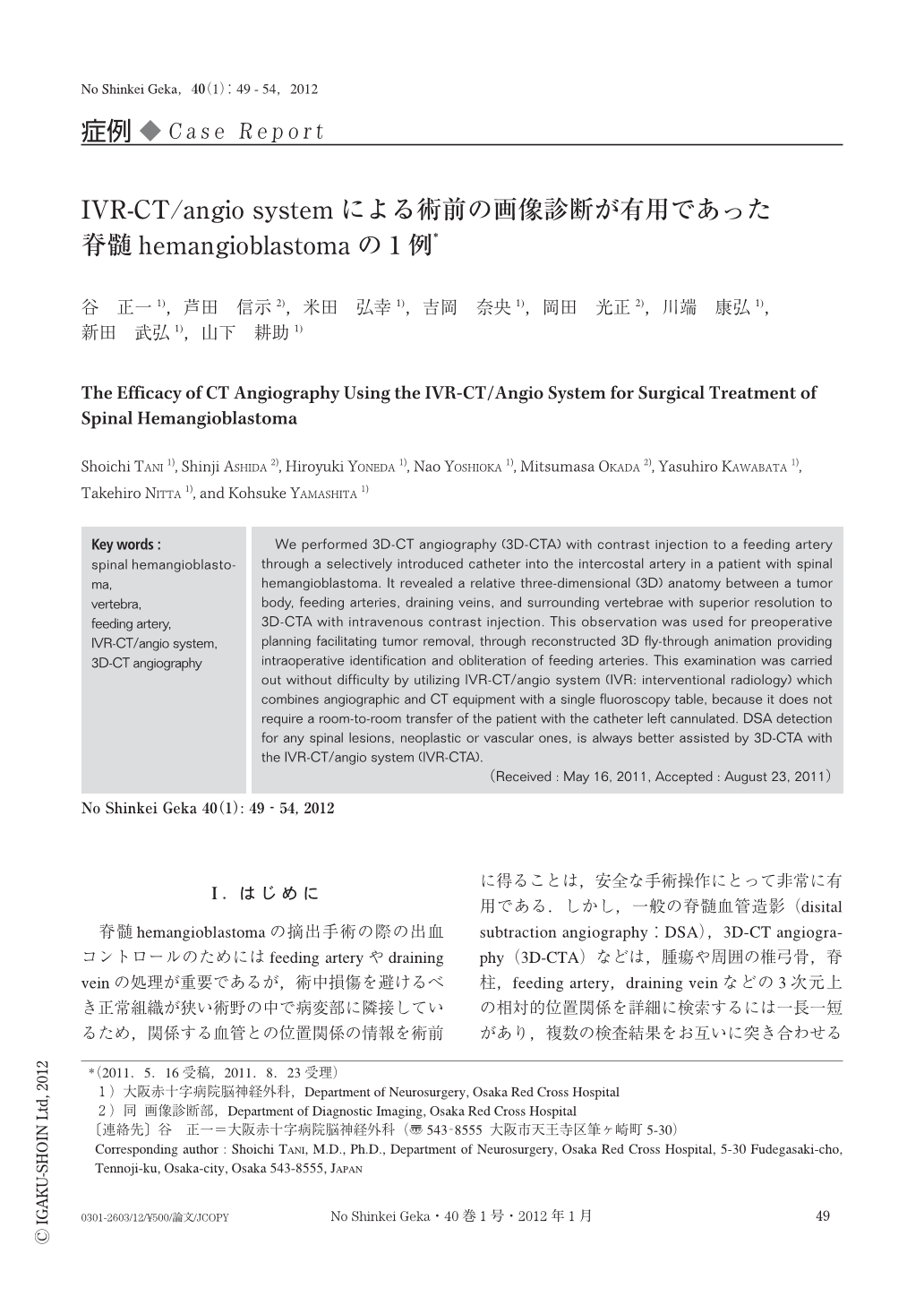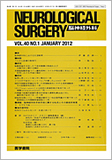Japanese
English
- 有料閲覧
- Abstract 文献概要
- 1ページ目 Look Inside
- 参考文献 Reference
Ⅰ.はじめに
脊髄hemangioblastomaの摘出手術の際の出血コントロールのためにはfeeding arteryやdraining veinの処理が重要であるが,術中損傷を避けるべき正常組織が狭い術野の中で病変部に隣接しているため,関係する血管との位置関係の情報を術前に得ることは,安全な手術操作にとって非常に有用である.しかし,一般の脊髄血管造影(disital subtraction angiography:DSA),3D-CT angiography(3D-CTA)などは,腫瘍や周囲の椎弓骨,脊柱,feeding artery,draining veinなどの3次元上の相対的位置関係を詳細に検索するには一長一短があり,複数の検査結果をお互いに突き合わせることで,術者の想定上に全体像が構築される.腫瘍が元来小さいことと,腫瘍への血流が肋間動脈から根動脈,脊髄動脈を経由してようやく到達することが,腫瘍とその成分の空間的および時間的な描出を不十分・不完全にさせる原因と思われるが,本報告では,脊髄DSAの際にカニュレーションされた肋間動脈から造影剤を注入して3D-CTAで病変を検出することで,従来の検査法による放射線学的情報を一度に鮮明な解像度でコンピュータに3次元情報として記録できることを提示する.さらにCT装置とDSA装置を縦列させて1つのベッドで両者の撮影が可能なIVR-CT/angio system(IVR:interventional radiology)を利用すれば,上述の検出方法を実施するための一連の操作を,部屋から部屋への患者の移送なしに簡便に施行できることを紹介する.
We performed 3D-CT angiography (3D-CTA) with contrast injection to a feeding artery through a selectively introduced catheter into the intercostal artery in a patient with spinal hemangioblastoma. It revealed a relative three-dimensional (3D) anatomy between a tumor body,feeding arteries,draining veins,and surrounding vertebrae with superior resolution to 3D-CTA with intravenous contrast injection. This observation was used for preoperative planning facilitating tumor removal,through reconstructed 3D fly-through animation providing intraoperative identification and obliteration of feeding arteries. This examination was carried out without difficulty by utilizing IVR-CT/angio system (IVR: interventional radiology) which combines angiographic and CT equipment with a single fluoroscopy table,because it does not require a room-to-room transfer of the patient with the catheter left cannulated. DSA detection for any spinal lesions,neoplastic or vascular ones,is always better assisted by 3D-CTA with the IVR-CT/angio system (IVR-CTA).

Copyright © 2012, Igaku-Shoin Ltd. All rights reserved.


